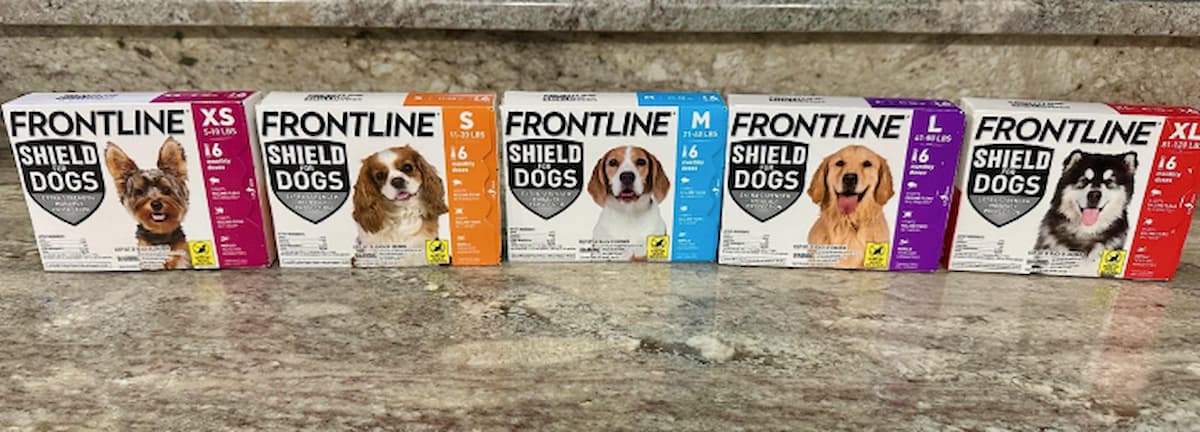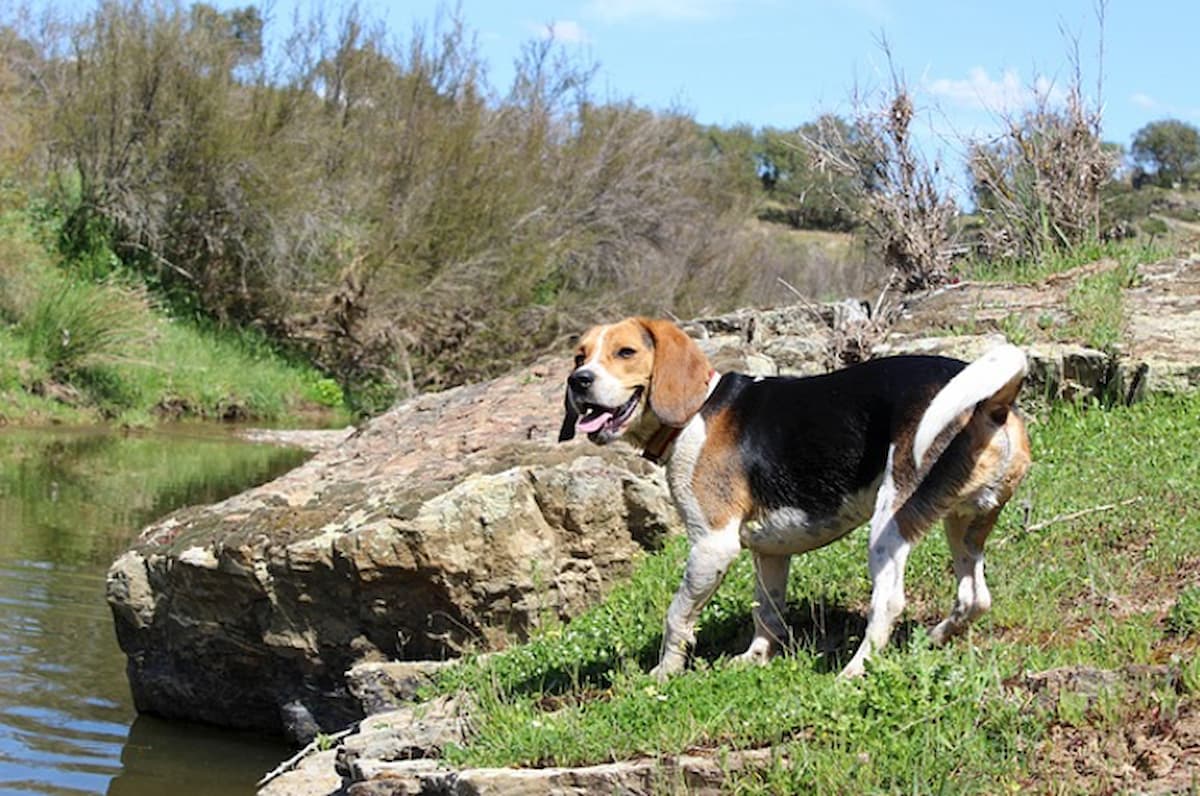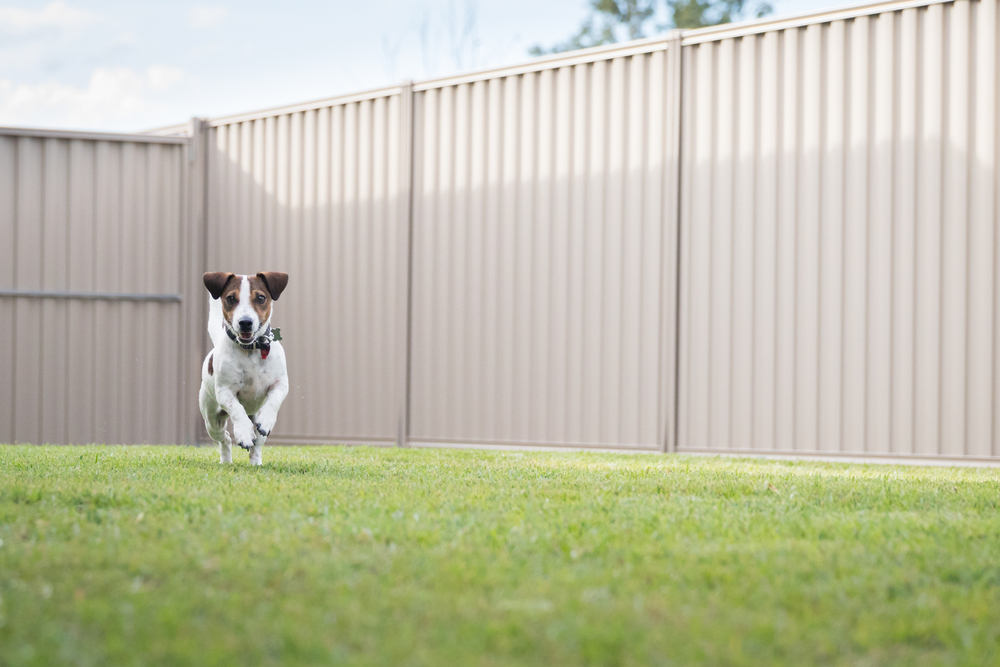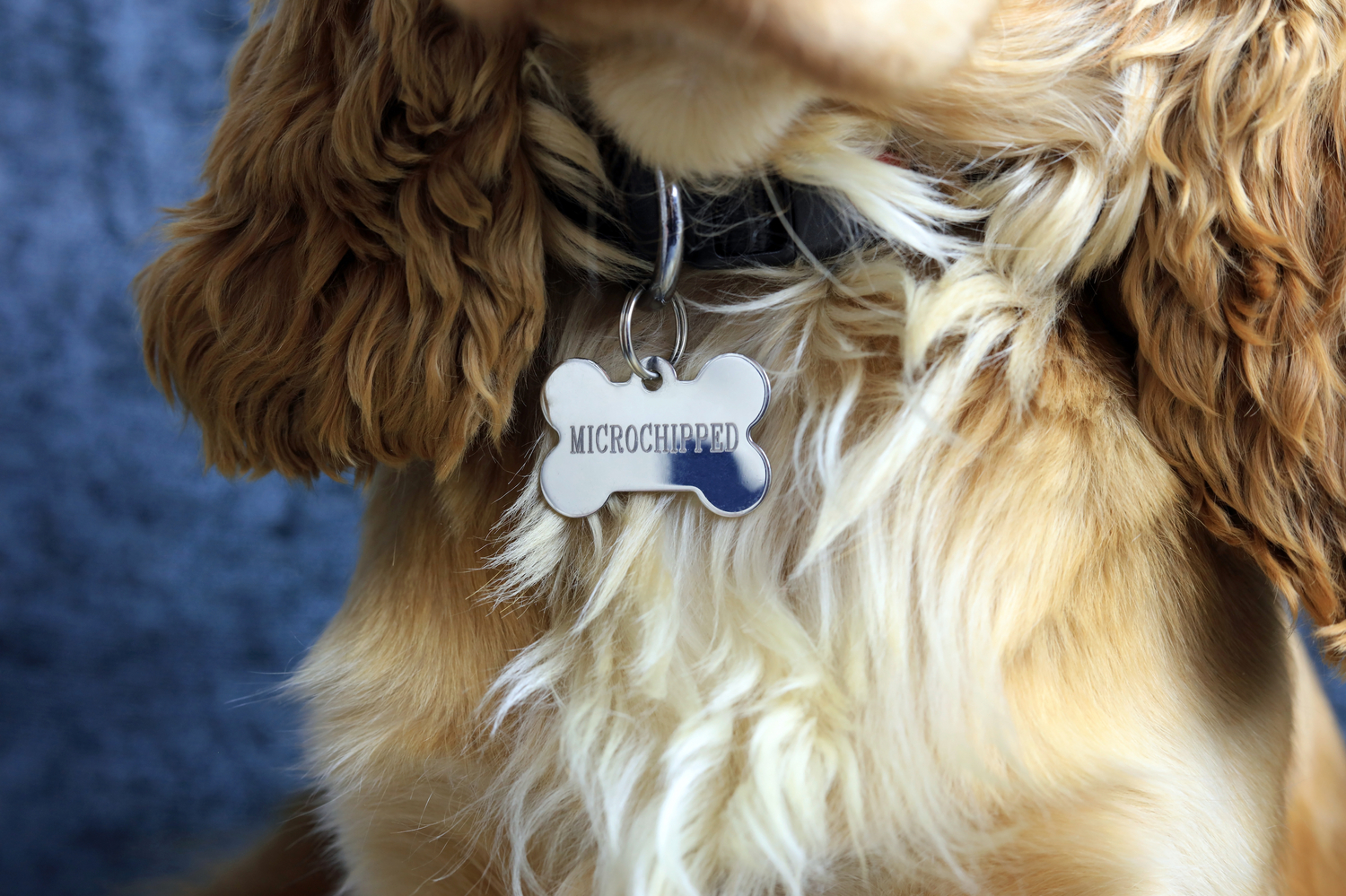5 Best Dog Tie Out Cables for Outdoor Safety
Published on August 26, 2023
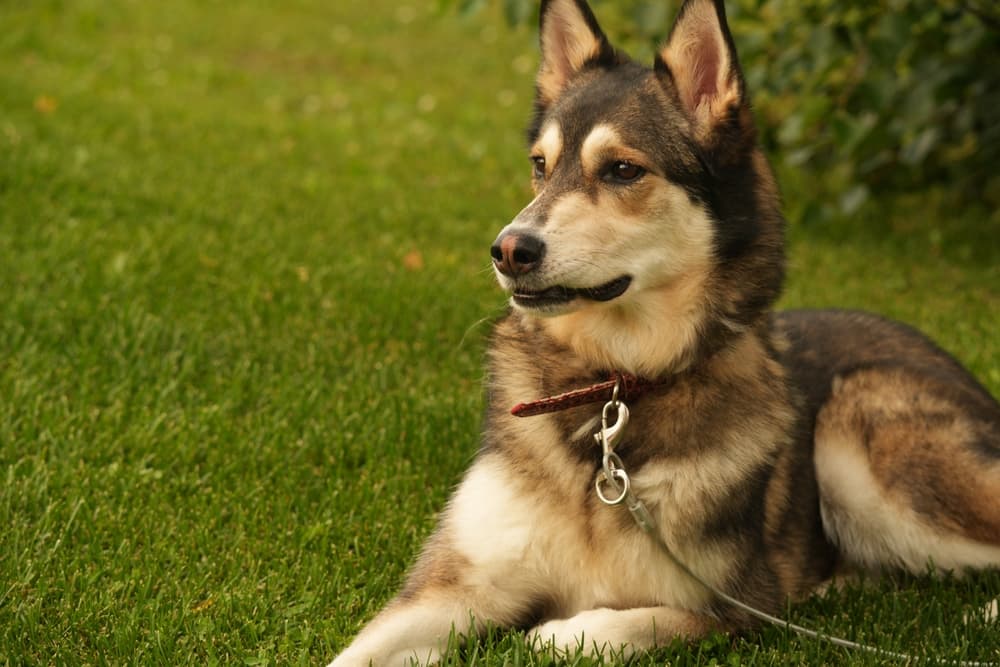
Keeping your dog safe while outside is important to ensure they don’t run into danger. A fenced-in yard or a leash are the most common ways to do this, but what if you don’t have a fence or don’t want to hold a leash? Dog tie out cables can be your (other) best friends.
Tie out cables (sometimes called dog yard leashes) typically give dogs more room to roam, and they allow you to contain your pup hands-free since they can attach to a structure or be secured to the ground. However, it’s important to choose the correct tie out, since the wrong choice can mean an escaped dog.
All featured products are chosen at the discretion of the Vetstreet editorial team and do not reflect a direct endorsement by the author. However, Vetstreet may make a small affiliate commission if you click through and make a purchase.
Our Top Tie Out Picks
- Best Overall Dog Tie Out Cable: Top Paw® Dog Tie Out
- Best Dog Tie Out Cable for Strong Dogs: BV Pet Super Heavy XXL Tie Out Cable for Dogs
- Best Dog Tie Out Cable for Small Dogs: Petest Reflective Tie-Out Cable for Small Dogs
- Best Dog Tie Out Cable and Stake Combination: Top Paw® Easy Grasp Stake Dog Tie Out
- Best Dog Tie Out Cable for Travel: EveryYay Stretch Your Legs Trusty Tether Tie-Out Cable with Spring Stake
5 Best Dog Tie Out Cables of 2024
Best Overall Dog Tie Out Cable
Our pick: Top Paw® Dog Tie Out
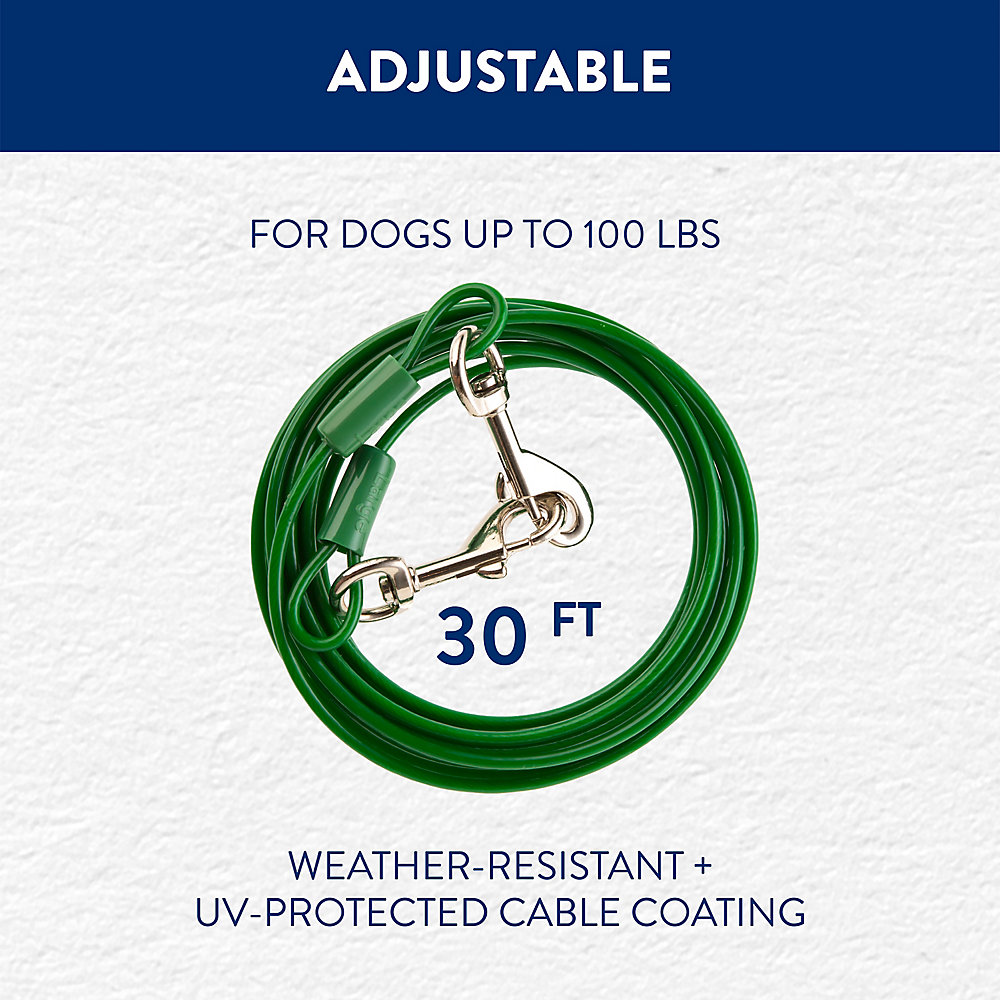
For less than $30, even the largest, strongest dogs can stay safe and secure with our best overall option. This basic, affordable tie out cable is available in multiple lengths and strengths so you can pick the perfect one for your situation without spending a fortune. Select a weight limit of 50, 100, or 200 pounds, and then choose a length between 10 feet and 40 feet. With these configuration options, most pet parents should be able to find the tie out that works for them.
The strong wire cable resists chewing and breaking, and it’s coated with a UV-protected, weather-resistant layer. Each end of the tie-out has a spring hook, one of which is attached to your dog’s harness and the other to a secured tether, like a runner or stake. Plus, the clips swivel, so your pet is less likely to tangle or get caught up in the cable.
Pros
- Multiple weight limits and cable lengths make this an ideal choice for most dogs
- Strong wire is coated with weather-resistant material
- Swivel hooks prevent tangles
- Affordable price even when choosing the strongest and longest cable length
Cons
- While most customers had no issues, a few mentioned that the cable coating cracked
Best Dog Tie Out Cable for Strong Dogs
Our pick: BV Pet Super Heavy XXL Tie Out Cable for Dogs

A cable tie-out is no good if it can’t actually keep your dog secured, and when dealing with a pet that is big and strong, you need to choose a tether that can withstand sharp jaws and lots of pulling. For those dogs, a tie-out like this one has more potential to be strong enough. The XXL size can handle dogs up to 250 pounds, which is one of the highest max weights we’ve seen. The steel cable is covered with an anti-rust vinyl coating that features reflective accents for added visibility at night. The clips are also steel, and they swivel to avoid tangling.
Even if your dog isn’t quite hitting the 250-pound mark, choosing a cable that is designed for larger dogs provides some extra safety and security. It’s also a good idea to choose a tie-out designed for larger dogs if your own pet is stronger than is typical for their size.
Pros
- Super-strong cable is rated for dogs up to 250 lbs
- Steel cable and clips are chew resistant
- Vinyl, reflective coating resists rust and provides visibility at night
- Great price point
Cons
- Only available in a 25’ length
Best Dog Tie Out Cable for Small Dogs
Our pick: Petest Reflective Tie-Out Cable for Small Dogs

Smaller dogs can use most of the same cable tie outs as large dogs, but you need to consider the weight of the cable relative to your pup’s size. This one is specifically designed for small dogs under 35 pounds, since the thinner cable is less bulky. The 25-foot length gives your pup plenty of room to roam, while the swivel clips keep them secured. Plus, the reflective material offers added safety in lower-light conditions.
Pros
- Lightweight steel and aluminum won’t be too heavy for small pets
- Strong swivel clips help avoid tangles
- Crimp covers provide rust protection
- Reflective vinyl cover offer visibility in the dark
- 25’ length gives small dogs plenty of space to explore
Cons
- Some customers had issues with the vinyl cover cracking
Best Dog Tie Out Cable and Stake Combination
Our pick: Top Paw Easy Grasp Stake Dog Tie Out
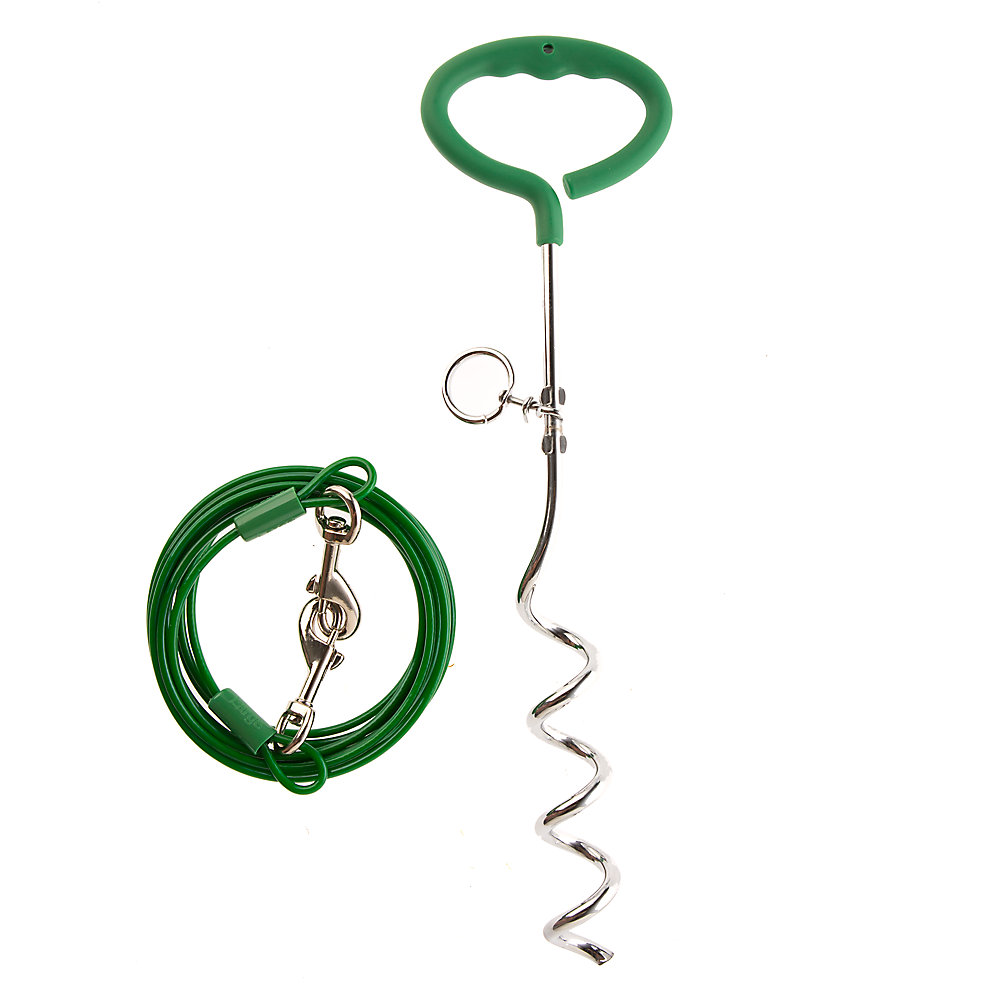
Instead of buying a cable tie out and stake separately, a set like this one makes it simple to get everything at once. It’s surprisingly affordable and will keep pets under 100 pounds secured. Available in both 15 foot and 30 foot lengths, the cable is made with the same strong vinyl-coated steel as our top pick, and the addition of the ground stake provides extra convenience. Just a heads up, while the stake will keep most dogs from escaping, it’s not 100 percent foolproof and can be pulled from the ground in some situations.
Pros
- All-in-one product includes both a dog tie out stake and cable
- Cable is similar to our top pick, with a strong steel core and vinyl cover
- Available in multiple lengths
- Ideal for pets under 100 pounds
Cons
- Stake can be pulled out of the ground depending on certain conditions and your dog’s behavior
Best Dog Tie Out Cable for Travel
Our pick: EveryYay Stretch Your Legs Trusty Tether Tie-Out Cable with Spring Stake

When traveling with your pet, having a cable and stake set on hand helps keep you prepared for any situation. But space can be limited while you’re on the go, so it’s not always ideal to bring an entire dog tie out and yard stake system. This tether combines everything into a portable package, with a mini stake that can be screwed into the ground, and a cable system that secures pets up to 100 pounds at either 30 foot or 40 foot lengths. The clips swivel, which prevents tangles, and all parts are weather resistant.
Pros
- Portable design makes it ideal for travel and camping
- Includes both a dog yard stake and tie out cable
- Vinyl-covered steel cable resists chewing
- Stake is simple to secure into the ground
- Available in 30’ and 40’ lengths
Cons
- Included stake is short, which makes it more prone to being pulled from the ground.
Dog Tie Out Cable Buyer’s Guide
There are a lot of factors that go into choosing the right dog tie out cable for you and your pup. Before you commit to one, take a look at these helpful tips.
Consider the intended use. When choosing the tie out cable for your dog, think about how you’ll be using it. If you’re looking for something to take with you when you head to the park, a tie out cable paired with a stake is most convenient. If you’re instead using it in your backyard as a more permanent fixture, investing into a runner can be a smart decision.
Don’t discount durability. Whichever you choose, selecting high-quality, strong materials is key. This is because there is always a risk that your dog could chew through the leash or break away from it, and using cables that are rated for your dog’s size and strength help keep them safe. Look for those with steel cores, which are chew resistant.
Weight matters. Don’t forget to check the weight limit on the cable you purchase. It’s better to pick one that has a higher weight limit than one that’s too low.
Select the right stake. If you plan to use the cable tie out with a stake, select one that’s longer and wider, as they tend to grip the ground more securely. You should also avoid using it in areas where the earth is sandy, which is easier to slip out of.
Safety Tips for Dog Tie Out Cables

When using a tie out cable, it’s important to follow a few basic safety considerations in order to prevent injuries and to make sure your pet stays secure.
Shalina Seifert, a Toronto-based dog trainer, echoes the importance of making sure the tie out cable you choose matches the weight of your pup. This can help prevent them from breaking the cable and getting loose.
Dogs can gain considerable speed if they decide to try to run off, for example if a rabbit or squirrel runs by. This can be a safety issue when they reach the end of the length and are jolted back – or break free. Especially with large, strong dogs, make sure the tie out and securing system are sturdy enough to withstand a situation like this, and take steps to prevent it in the first place.
Show your dog how far they can venture on the line, and be sure to supervise them while they get used to the tether. “I would sit with the dog at least for the first few times to ensure they know it’s not a toy. It’s not for chewing,” explains Seifert. “If they get scared by the noises or how it works, you’re there to help out.”
To prevent neck injuries, use tethers with harnesses instead of collars. “Tie outs should always be hooked to a harness and not a collar to reduce the risk of strangulation or just any kind of pressure or trauma to the throat,” Seifert says.
While they may be convenient, dog tie out cables are not an excuse to leave your pet alone in your yard for an extended time. Check up on your pup frequently, and be careful during extreme weather. Dogs are more sensitive to heat, so make sure they have access to shade and water in the summer, and limit the time they spend outside.
And if you allow your dog to be outside alone, don’t put the tie out too far from your house. “Make sure the tie out reaches the door so your dog can tell you when they need inside,” says Seifert.
Dog Tie Out FAQs
Can dogs chew through tie out cables?
Depending on the material, your dog might be able to chew through the cables. This is one reason why you should never leave your pet unsupervised. By keeping an eye on your dog, you’ll be able to prevent a dog that is chewing on the cable from cutting the line completely. If you’re concerned that your dog might attempt to chew the cable, look for strong materials, like steel.
How do you install a dog tie out cable?
How you install a dog tie out cable will depend on the system you’re using (and of course, you should always read the instructions on the products you purchase). One clasp will attach to your pet’s harness, and the other can be secured to a runner, stake in the ground, or a strong tree or pole.
How can you shorten a dog tie out cable?
To keep the cable’s strength intact, it’s best to buy the size you need in the first place. Cable tie outs are available in multiple sizes, so measure the area you’d like to keep your dog within and buy the cable that corresponds to that length. If you’d still like to shorten the cable, you can do so temporarily by tying knots into the line.
What Are Dog Tie Out Cables?

Think of dog tie out cables like leashes, except longer and hands-free. They come in different lengths and a variety of materials, like plastic and steel. You can also use them in a few different ways, most commonly as a “runner” or with a stake.
Runners, like the name implies, often give your pet more room to roam. They also tend to be more permanent. A wire extends between two posts or strong trees, and your dog’s cable will attach to it. Your pup can run back and forth along the length of the wire, with how far they can go dictated by the length of the dog tie out. Dog runner cables allow your dog to explore a large backyard, and can also be stronger, which prevents larger or particularly active dogs from escaping.
Dog tie out stakes are secured to the ground with a corkscrew that twists into the dirt. A cable is attached to the stake and to your dog, and it allows your pet to roam within the circumference of the cable length. The benefit of using dog yard stakes is that they are super portable, so they can be taken anywhere you have an earthy surface to drive it into. They are more prone to being pulled out of the ground, however, and won’t provide a secure tether in sand.
When implemented properly, dog tie out cables used with stakes and runners can be safe, but you’ll need to consider your individual dog’s behavior: do they tend to take off after animals? Are they prone to chewing leashes? Is the cable and runner/stake rated for your pet’s size and strength? These factors can affect how safe or unsafe these tools are.
How We Made Our Selections
In addition to speaking with experts, we also focused on the following factors to deliver the most well-rounded list of the best dog tie out cables.
Safety. With tie out cables for dogs, a lot of times safety depends on the material, the attachment type, and the appropriate design for your dog’s size. With that in mind, we tried to highlight companies that provide very specific info about their cables to help guide pet parents.
Ease of use/convenience. Tie outs are supposed to make your life easier, so we looked at the design and setup of each option to ensure that it wouldn’t provide a ton of extra work for you.
Ratings/reviews. We love hearing what other pet parents have to say, so we combed through online reviews to find those that were suitable for different situations.
Price. Since cost almost always plays a part in any purchase you make, we tried to provide a variety of options to suit a variety of budgets.

